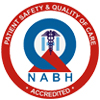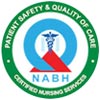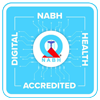
Monitoring Blood Sugar At Home
September 25, 2023
How Can I Monitor My Blood Sugar At Home?
There are two main ways you can monitor your blood sugar at home if you have diabetes:- With a glucose meter and finger stick.
- With a continuous glucose monitor (CGM).
Glucose Meters And Test Strips
The most common type of blood sugar monitoring involves using a glucose meter and test strips. This is a “finger stick check.” You prick your fingertip with a small needle called a lancet to produce a blood drop. You then place the drop against the test strip in the glucose meter, and the meter shows your blood sugar level within seconds. Finger stick checks only measure blood glucose at one moment in time, so people with diabetes, especially those taking insulin, often have to check their blood sugar several times a day using this method.CGMs
CGM involves wearing a device that measures your glucose levels 24 hours a day. The device uses this data to form a graph that shows a more complete picture of how your blood sugar levels change over time. Most CGM devices use a tiny sensor that you insert under your skin. The sensor measures glucose levels in the fluids between your body’s cells (interstitial fluid). There are a few different types and brands of CGMs. Some CGMs link to specific insulin pumps. Others operate independently. Most CGMs can send alarms or alert messages when they detect low or high glucose levels.Tracking Blood Sugar Levels
Most glucose meters allow you to save the results. You may be able to use an app on your smartphone to track your levels. If you don’t have a smartphone, keep a written record of your blood sugar levels that includes the date, time of the test and any other details, like if it was before or after a meal.How Do I Check My Blood Sugar?
In general, to check your blood sugar with a glucose meter, you’ll:- Wash your hands. If you have food debris on your fingers, for example, it can affect the result of the test. If you can’t wash with soap and water, use an alcohol wipe on your fingertip.
- Insert a test strip into your glucose meter.
- Use a lancing device to prick the side of your fingertip to get a drop of blood. You may need to squeeze your finger to produce more blood or prick a different finger if you can’t get enough blood.
- Touch and hold the edge of the test strip against the drop of blood and wait for the result. Your blood glucose level will appear on the meter’s screen.
How Often Should I Check My Blood Sugar?
How often you should check your blood sugar depends on what type of diabetes you have and other factors, like the diabetes medicines you take, your overall health and the demands of your daily life. You may benefit from more regular blood sugar monitoring if you:- Take insulin.
- Are pregnant.
- Are having difficulty reaching your blood glucose targets.
- Have frequent low blood sugar episodes.
- Have low blood glucose levels without experiencing the usual warning signs.
- Are sick.
- Just had surgery.
When Should I Check My Blood Sugar?
It’s especially important to check your blood sugar when you experience symptoms of low or high blood sugar. There are also some general guidelines about which times of the day are most beneficial to check your blood sugar to assess how well your management plan is working.Low Blood Sugar
Most people with diabetes have symptoms of low blood sugar (hypoglycemia) when their blood sugar is less than 70 mg/dL (milligrams per deciliter). When your blood sugar is low, your body gives out signs that you need food. Common early symptoms of low blood sugar include:- Weakness.
- Dizziness.
- Intense hunger (polyphagia).
- Trembling and feeling shaky.
- Sweating.
- Pounding heart.
- Feeling frightened or anxious.
High Blood Sugar
For people with diabetes, healthcare providers usually consider blood sugar levels above 180 mg/dL to be high blood sugar (hyperglycemia). However, most people with diabetes don’t feel symptoms of high blood sugar until their level is 250 mg/dL or higher. High blood sugar can be dangerous to your health in the short term and long term, so it’s important to check your blood sugar if you’re experiencing the following symptoms:- Increased thirst (polydipsia) and/or hunger.
- Frequent urination (peeing).
- Headache.
- Irritability.
- Blurred vision.
Blood Sugar Monitoring During The Day
Certain times of the day are most helpful to check your blood sugar to assess your overall diabetes treatment plan, especially if you take insulin. These times include:- When you wake up: Your blood sugar level at this time is known as fasting glucose. It can help assess how your blood sugar levels are overnight, especially if you also check your blood sugar before you go to bed.
- Before meals: Checking your blood sugar before meals can help you plan your meal. If you take insulin, checking before a meal helps you to know how to dose for it. Checking before and after meals also helps you and your provider assess how food affects your blood sugar.
- After meals: Checking your blood sugar two hours after you start your meal can help you and your provider assess how food affects your blood sugar and if you need to change your insulin or medication doses. It’s common to experience high blood sugar after eating, especially if you need to take insulin.
- Before and after exercise: Checking your blood sugar before and after exercise can help you and your provider assess how that type of activity affects your blood sugar. Exercise typically lowers your blood sugar but it could also increase it, so checking afterward can help catch these episodes.
- Before you go to sleep: Checking your blood sugar before you go to sleep can catch potential low or high blood sugars. If you experience low blood sugar while you’re sleeping, it can be more dangerous because you might not wake up right away from the symptoms. Consistently going to sleep with high blood sugar can be harmful to your health over the long term, because it’ll likely be elevated for several hours while you’re sleeping.
What Is The Target Range For Blood Sugar?
If you have diabetes, your target range for blood sugar levels is unique to you. Blood glucose targets vary based on:- How long you’ve had diabetes.
- Your age and life expectancy.
- Certain conditions you may have that affect blood sugar, such as Cushing syndrome or gastroparesis.
- If you have cardiovascular disease.
- If you have diabetes complications, like neuropathy, retinopathy or nephropathy.
- If you have hypoglycemia unawareness (not experiencing symptoms of low blood sugar).
- If you’re pregnant or trying to become pregnant.
- Your access to diabetes medications and management technology.
Recent Blogs
- Factors Contributing to Infertility
- Advantages of Robotic Surgery
- What is Robotic Surgery? Conditions Where Robotic Surgery Can Be Used
- Robotic Surgical Systems
- Types of Robotic Surgeries
- Causes of Male and Female Infertility
- What Is Male Infertility? Treatments For Male Infertility
- Superfoods That Can Boost Your Chances of IVF Success
- 5 Myths Over IVF
- What Are The Do’s And Don’ts For The Embryo Transfer Process?
- What are the different Cardiology Subspecialties?
- What is the difference between Invasive, Non Invasive and Interventional Cardiology?
- What is the difference between Cardiologist and Cardiothoracic Surgeon?
- What Are the Different Types of Heart Surgery and Their Purposes?
- Types of nuclear cardiology tests
2023
- December (6)
- November (8)
- Cardiac Catheterization: When Is It Required?
- Types Of Pediatric Cardiology Test
- Tips For Preventing Heart Problems In Kids
- Advances In The Diagnosis Of Congenital Heart Disease In Children
- Signs Of Heart Problems In Children
- What Is A Pediatric Cardiologist?
- Understanding Congenital Heart Defects In Children
- Pediatric Cardiac Surgery: Types And Considerations
- September (7)
- Lifestyle Changes To Prevent Diabetes
- New Innovative Advances In Diabetes Treatment
- The Link Between Obesity And Diabetes
- Monitoring Blood Sugar At Home
- The Importance Of Regular Diabetes Check-ups
- Understanding Diabetes: Types, Causes, Symptoms & Treatment
- Lower Blood Sugar Naturally: Managing Blood Sugar Through Diet
- August (8)
- What’s The Difference Between A Neurologist And Neurosurgeon?
- Dementia: Causes, Symptoms, Diagnosis And Treatment
- Seizures: Causes, Symptoms, Diagnosis And Treatment
- Epilepsy: Causes, Symptoms, Diagnosis And Treatment
- Is Autism A Neurological Disorder? Causes, Symptoms & Diagnosis
- Pediatric Neurology: Neurological Disorders In Pediatrics
- What Are The Most Common Neurological Disorders?
- Types Of Neurosurgery: Overview, Procedure & Costs
- July (11)
- Types of Cardiac Stents
- Types of nuclear cardiology tests
- What Are the Different Types of Heart Surgery and Their Purposes?
- What is the difference between Cardiologist and Cardiothoracic Surgeon?
- What is the difference between Invasive, Non Invasive and Interventional Cardiology?
- What are the different Cardiology Subspecialties?
- What Are The Do’s And Don’ts For The Embryo Transfer Process?
- 5 Myths Over IVF
- Superfoods That Can Boost Your Chances of IVF Success
- What Is Male Infertility? Treatments For Male Infertility
- Causes of Male and Female Infertility
- April (4)
- March (1)
-

Share with us
Click Here -

Organ Transplantation
Click Here
Copyrights © 2025 PSG Hospitals. All Rights Reserved.








